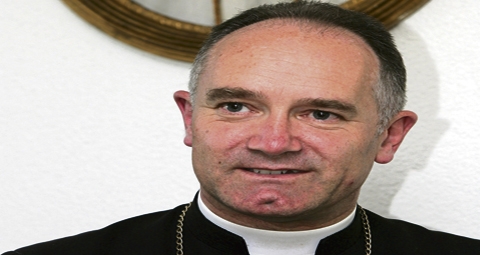BY Ian Dunn | April 4 | ![]() 0 COMMENTS
0 COMMENTS ![]() print
print

Pope Francis meets with Society of St Pius X superior general
Vatican confirms ‘private and informal meeting’ took place on Saturday between the Holy Father and Bishop Bernard Fellay
Pope Francis has met with the head a group of traditionalist Catholics often referred to as dissidents amid new hopes for progress toward ending a quarter-century schism.
The Society of St Pius X (SSPX) said today that the 40-minute meeting was cordial, and took place because the Pope wanted a ‘private and informal meeting’ with its superior general, Bishop Bernard Fellay (above).
In a short statement the Vatican press office said that the meeting was held on Saturday. “The press office confirms that on Saturday, April 2, a meeting took place in the Vatican between Pope Francis and Bishop Bernard Fellay, superior general of the St Pius X Fraternity,” the statement says.
In 2014 the Vatican resumed dialogue with the society when doctrinal talks on bringing it back under Rome’s wing collapsed. Last year, Pope Francis allowed priests of the society, which has no formal nore legal status in the Catholic Church, to hear confessions during his Holy Year of Mercy. The Pope has also expressed his hopes that ‘in the near future solutions may be found to recover full communion with the priests and superiors of the fraternity.’
“In the meantime motivated by the need to respond to the good of these faithful, through my own disposition, I establish that those who, during the Holy Year of Mercy, approach these priests of the Fraternity of St Pius X to celebrate the sacrament of reconciliation shall validly and licitly receive the absolution of their sins,” the Pope writes.
The SSPX was founded in 1970 by Archbishop Marcel Lefebvre in order to preserve the centuries-old tradition of Catholic worship in the Latin Church. In 1988, Archbishop Lefebvre consecrated four bishops in defiance of explicit Papal dispositions and in violation of an agreement reached a short time before, under the terms of which the archbishop would have been permitted to consecrate one bishop. Since that time, the status of the SSPX has been deemed ‘canonically irregular.’ Efforts to repair the relationship between the SSPX and Church leadership in Rome have continued despite ongoing difficulties.











